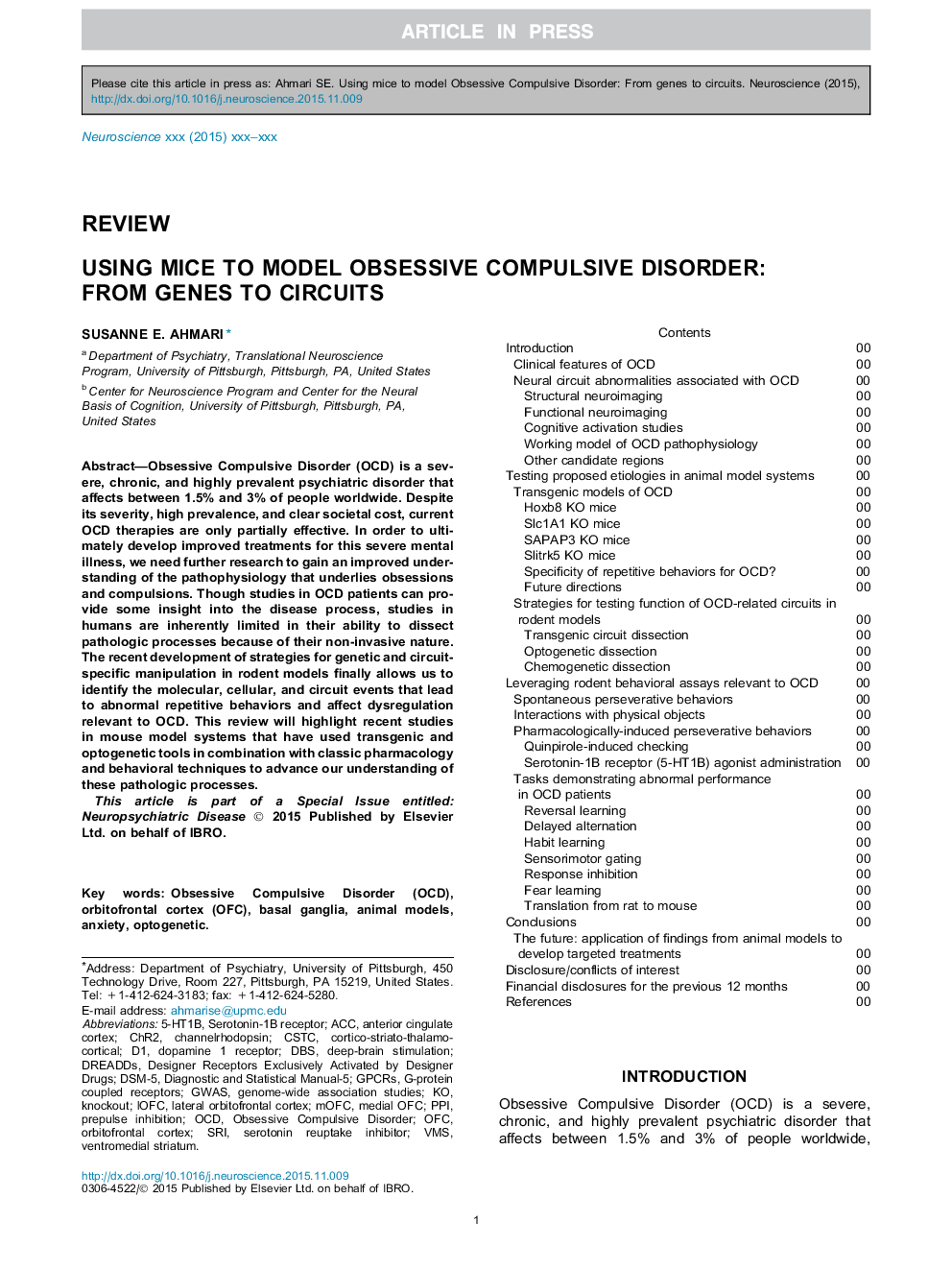| Article ID | Journal | Published Year | Pages | File Type |
|---|---|---|---|---|
| 6271160 | Neuroscience | 2016 | 17 Pages |
Abstract
Obsessive Compulsive Disorder (OCD) is a severe, chronic, and highly prevalent psychiatric disorder that affects between 1.5% and 3% of people worldwide. Despite its severity, high prevalence, and clear societal cost, current OCD therapies are only partially effective. In order to ultimately develop improved treatments for this severe mental illness, we need further research to gain an improved understanding of the pathophysiology that underlies obsessions and compulsions. Though studies in OCD patients can provide some insight into the disease process, studies in humans are inherently limited in their ability to dissect pathologic processes because of their non-invasive nature. The recent development of strategies for genetic and circuit-specific manipulation in rodent models finally allows us to identify the molecular, cellular, and circuit events that lead to abnormal repetitive behaviors and affect dysregulation relevant to OCD. This review will highlight recent studies in mouse model systems that have used transgenic and optogenetic tools in combination with classic pharmacology and behavioral techniques to advance our understanding of these pathologic processes.
Keywords
DBSventromedial striatumdopamine 1 receptorOrbitofrontal cortex (OFC)OCDcortico-striato-thalamo-corticalCSTCDSM-5ChannelrhodopsinlOFC5-HT1BmOFCChR2OFCACCPPIGPCRsVMSSRIDREADDsG-protein coupled receptorsObsessive compulsive disorderObsessive compulsive disorder (OCD)AnxietyOptogeneticserotonin reuptake inhibitordeep-brain stimulationbasal ganglialateral orbitofrontal cortexorbitofrontal cortexanterior cingulate cortexAnimal modelsGenome-wide association studiesGWASPrepulse inhibitionknockoutdesigner receptors exclusively activated by designer drugs
Related Topics
Life Sciences
Neuroscience
Neuroscience (General)
Authors
Susanne E. Ahmari,
